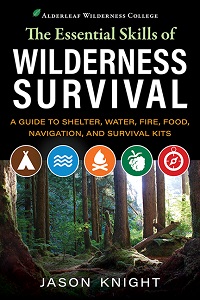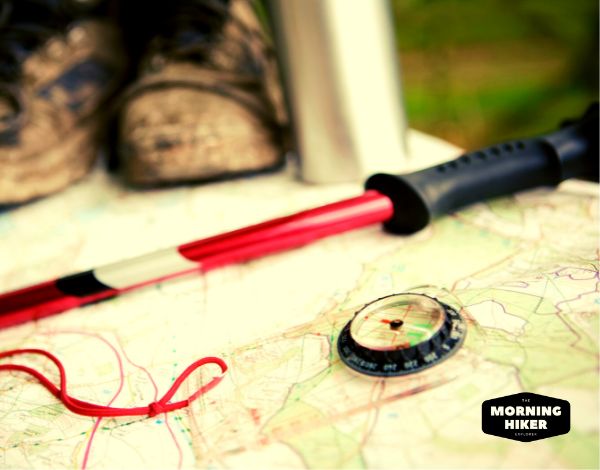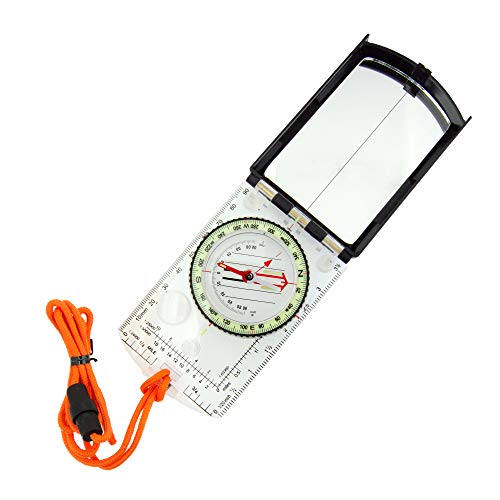How do you use a map and compass? Discover these simple techniques to master navigation and never fear getting lost in the wilderness.
Welcome to the ultimate guide on navigating the great outdoors like a pro!
Whether you’re embarking on an epic hiking adventure or simply exploring a new trail, having the skills to use a map and compass is crucial. With these trusty tools in your arsenal, you’ll never get lost again.
But it’s not just about finding your way; it’s about unlocking a world of hidden treasures and uncharted territories. So get ready to dive into the art of navigation and discover the true spirit of exploration.
Let’s set course for adventure and embark on a journey that will leave you breathless, in awe of nature’s wonders, and armed with the knowledge to conquer any trail.
Affiliate
In This Article
Key Takeaways
- Compass calibration and map reading skills are essential for mastering navigation techniques in the great outdoors.
- Natural and man-made landmarks can be used as reference points for orientation and navigation.
- The reverse azimuth technique can be used to find the way back by determining the degree traveled and returning in the reverse direction.
- Trusting instincts, staying aware of surroundings, and incorporating navigation techniques can help navigate safely in unfamiliar terrain.
How Do You Use A Map And Compass?
Imagine yourself standing in the vast expanse of the great outdoors, surrounded by towering trees, rugged landscapes, and endless possibilities. You long to embark on an adventure, to explore the unknown and discover hidden treasures.
But wait, how will you find your way back?
In this guide, we shall unlock the secrets of mastering navigation techniques, empowering you with the freedom to roam and the confidence to find your way.
Just as a compass needle points to the north, we shall be your guiding needle in the doghouse, showing you the path to navigate through the wilderness.
The compass, a faithful companion, holds the key to unlocking 360 degrees of exploration. From parallel walking to reverse azimuth, we will equip you with the skills to navigate with ease.
But navigation is not just about instruments; it’s about understanding the language of the land. We will teach you to read the signs, to use identifiable landmarks as your guiding stars.
With our guidance, you will never feel lost in familiar territory again.
Let us delve into the art of navigation, for freedom awaits those who dare to find their way in the great outdoors.
Finding Your Bearings
These techniques include the needle in the doghouse and reverse azimuth. Mastering these navigation techniques is crucial for your outdoor adventures.
To start, make sure your compass is properly calibrated by aligning the north needle with the red arrow on the compass. This will ensure accurate readings.
Remember, map reading is also essential for navigation. Familiarize yourself with the map and understand how to interpret it. Identifying landmarks on the map and in the real world will help you navigate effectively.
By combining compass readings with map reading skills, you’ll have the confidence to explore the wilderness with freedom and independence.
So go ahead, embrace the beauty of nature and let these techniques guide you on your journey.
Understanding the Compass
To understand the compass, start by placing the north needle inside the red arrow on the compass. This simple step allows you to determine the direction you’re facing.
- PROFESSIONAL GRADE: This professional grade military compass will always lead you in the right direction. The hiking compass is ideal for camping, military usage, emergencies, and anywhere the beaten track takes you.
- ERGONOMIC DESIGN: The lensatic military compass increases the reading’s accuracy with a lens on the rear sight that magnifies the card dial – so you’ll always get an accurate reading. Please keep the compass as horizontal as possible so that it turns and points in the correct direction.
- KEY FEATURES: This manual magnet compass consists of Acrylic Baseplate with Azimuth bearing and 360 degree rotating bezel. With the help of a magnetic needle which consists of a liquid-filled capsule (bubble free) helps to swing fast and freely point you towards north. The Magnifying Glass is used for reading and navigating geological maps. Along with this, it has the compass Ruler Scale of 1:24000 for precise route mapping
- PORTABLE & LIGHTWEIGHT: Boy Scout compass is small in size and an essential piece of survival gear to have in your pocket or hiking backpack. Both children and adults can use it, easy to carry during your trips especially for field trips. Portable Handheld Compass with magnetic needle and directional arrow, orienting lines compass and lanyard
- PROFESSIONAL GRADE: This professional grade military compass is the best camping survival gadgets for field trips,Waterproof and Shakeproof.Ideal for holiday camping,mountaineering,kayaking,climbing,adventure expedition,outdoor wildlife,emergencies,and anywhere the beaten track takes you.
- HIGH ACCURACY:This lensatic military compass rotates very flexibly and the damping oil enhance pointer stability. Built-in a bubble level, which can improve its accuracy and decrease its errors, you’ll always get an accurate reading.
- Adjustable Declination – True North and Magnetic North are not identical. The Sun Company ProSight Base Plate Map Compass has an adjustable declination dial for the most precise direction reading.
- Luminous Rotating Bezel – Compass bezel rotates 360 degrees for easy bearings. Dial is ultra-luminous which makes this one of the premier navigational compasses for low-light situations.
- High Accuracy and Reliability: This military compass ensures precise readings, making it perfect for camping, hiking, and mountaineering.
- Built to Last: Constructed with rugged materials, our compass survival is designed to withstand rough conditions, providing durability and weatherproofing.
Now, let’s dive into using a compass effectively for navigation in the great outdoors:
1. Using a compass effectively:
- Familiarize yourself with the concept of 360 degrees, with north as zero and degrees increasing clockwise.
- Utilize the needle in the doghouse technique to determine the degree you’re facing before any outdoor activity.
- Remember that the reverse azimuth will guide you back in the same general direction you came from.
2. Navigating without a compass:
- If you find yourself without a compass, rely on identifiable landmarks to navigate and find your way back.
- Look for natural signs, such as moss growing on the north side of trees or the position of the sun, to determine direction.
- Consider learning about celestial navigation techniques, such as using the stars or the moon, as a backup method.
By mastering these techniques, you can navigate confidently and find your way even when a compass isn’t available. Enjoy the freedom of exploring nature while staying safe and on track.
Using Landmarks for Orientation
Explore your surroundings and use identifiable landmarks to orient yourself and navigate effectively.
When it comes to identifying natural landmarks, keep an eye out for distinctive features such as mountains, rivers, or unique rock formations. These can serve as reliable reference points and help you determine your location.
You also want to pay attention to the position of the sun and the direction of shadows, as they can provide valuable clues about your orientation.
On the other hand, man-made landmarks like buildings, roads, or even signposts can also be used for navigation. These structures are often marked on maps and can serve as clear points of reference.
By familiarizing yourself with both natural and man-made landmarks, you can confidently navigate your way through the great outdoors and enjoy the freedom of exploring nature.
Reverse Azimuth Technique
Use the reverse azimuth technique to find your way back by envisioning it as a compass needle leading you along a familiar path, guiding you like a trusted friend in the wilderness.
In this video, you’ll learn about azimuth and how to use it. The reverse, or back azimuth is doing this in reverse. I’ll give details following the video.
This technique is especially useful when navigating unfamiliar terrain where the needle in the doghouse technique may have limitations.
The Reverse Azimuth Technique with a compass is a method of navigation that involves taking an azimuth reading and then turning around to take a second reading in the opposite direction. This second reading is known as the back azimuth, and it can be used to determine the direction back to the starting point. Here are the steps to use the Reverse Azimuth Technique with a compass:
1. Take an azimuth reading to determine the direction to your destination.
2. Turn around and take a second reading in the opposite direction.
3. Calculate the back azimuth by adding 180 degrees to the azimuth if it is less than 180 degrees, or subtracting 180 degrees from the azimuth if it is more than 180 degrees.
4. Use the back azimuth to navigate back to the starting point.
Backsighting is a method of sighting that uses an azimuth reading taken backwards. It involves turning the azimuth sight around to find the way back to the original starting point[1]. The Reverse Azimuth Technique can be used in conjunction with backsighting to navigate back to the starting point[
Tips for Navigating Safely
Stay aware of your surroundings and remember to trust your instincts while navigating in unfamiliar terrain. When it comes to mastering navigation techniques, reading topographic maps and using GPS devices are essential skills to ensure your safety and freedom in the great outdoors.
Topographic maps provide valuable information about the terrain, including elevation, contour lines, and landmarks. Understanding how to interpret these maps will help you plan your route and identify potential obstacles or challenges along the way.
Additionally, GPS devices offer a reliable and convenient tool for navigation, providing real-time coordinates and directions. They can help you stay on track and find your way back if you stray off course.
However, it’s important to remember that technology can fail, so it’s always wise to carry a physical map and compass as a backup.
By incorporating these techniques into your outdoor adventures, you can navigate safely and confidently, exploring nature to the fullest.
Frequently Asked Questions
Can I use navigation techniques in urban areas or is it only applicable in natural environments?
Yes, you can use navigation techniques in urban areas. Urban navigation challenges may arise due to unfamiliar cities, but applying navigation techniques can help you find your way. Use landmarks and the reverse azimuth method to navigate effectively.
How do I determine my exact location using navigation techniques?
To determine your exact location using navigation techniques, start by using the needle in the doghouse method to find the general direction you’re facing.
Then, use identifiable landmarks and reverse azimuth to guide you back to where you started.
What are some common mistakes people make when using a compass for navigation?
Common mistakes when using a compass for navigation include not properly aligning the needle in the doghouse, misinterpreting degrees, relying solely on the compass without using other techniques, and not using identifiable landmarks for reference.
Are there any specific tools or equipment that I need to have for successful navigation?
To successfully navigate in the great outdoors, essential navigation gear includes a compass, map, GPS device, and a reliable watch. These tools will help you determine direction, track your progress, and ensure a safe and successful journey.
Can I use navigation techniques during nighttime or in low visibility conditions?
Yes, you can use navigation techniques for night hikes and in foggy conditions. By using a compass and identifying landmarks, you can determine your direction and find your way back even when visibility is low.
Before You Go
In the vast wilderness of life, a map and compass are like guiding stars in the night sky. With these tools in hand, you can navigate through treacherous terrains, unforeseen obstacles, and unfamiliar landscapes.
Knowing how to use a map and compass is not just about finding your way from point A to point B; it’s about empowering yourself with the ability to explore, discover, and conquer.
These trusty companions provide a sense of direction, independence, and confidence in the face of uncertainty.
They unlock a world of exploration, unlocking the hidden treasures and paths that await beyond the beaten track.
Don’t just wander aimlessly; arm yourself with the knowledge to find your way, embrace the journey, and create your own adventures.
The Essential Skills of Wilderness Survival

The Essential Skills of Wilderness Survival will empower you to survive emergencies and grow deeper connections to nature, with expert instructor, Jason Knight of Alderleaf Wilderness College
You’ll discover skills that could save your life and the lives of those around you, so that you make it through challenges alive and safe, and can fully enjoy the freedom of exploring the backcountry, without worry.








We are participants in the Amazon Services LLC Associates Program, an affiliate advertising program designed to provide a means for sites to earn advertising fees by advertising and linking to Amazon.com